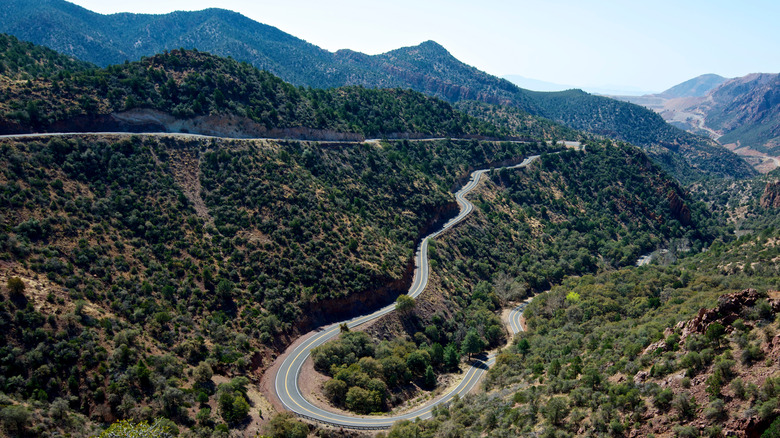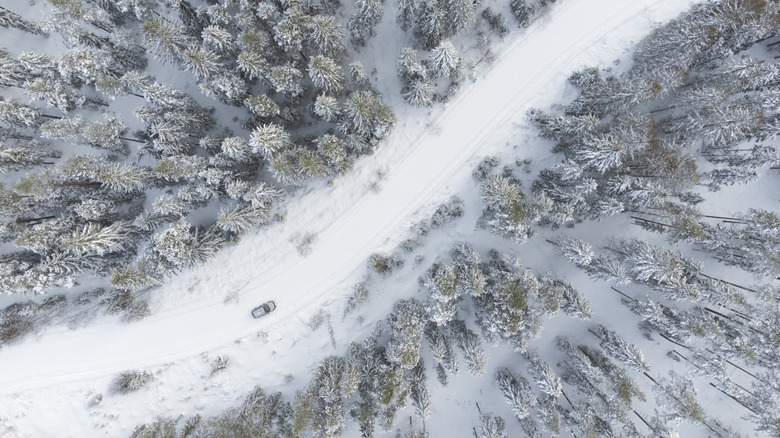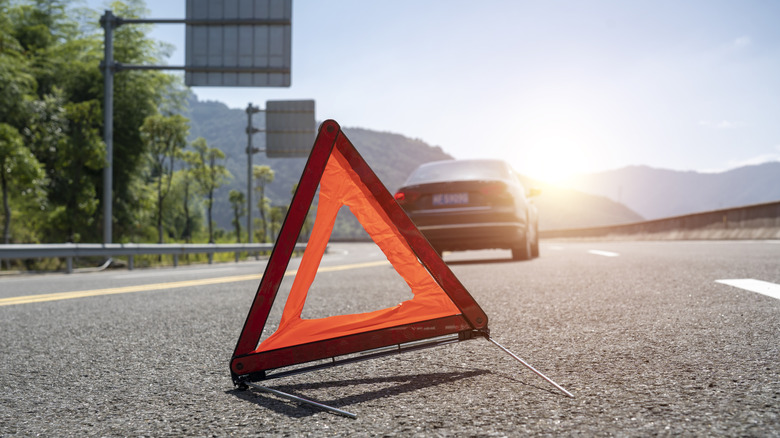This Dangerous Arizona Highway May Be Best To Avoid On A Road Trip
The United States is a massive country that is arguably best explored by automobile. After all, is there anything more American than jumping in a car and hitting the open road? Road trips — such as this great northern coast-to-coast route — have come to define what it means to travel in the U.S. As a result, each year millions of travelers fire up their engines and cruise along the blacktop in an attempt to explore the nooks, crannies, and hidden backroad gems that make the country such a fascinating place. Luckily, there is no shortage of roads to choose from.
Beginning just a stone's throw from Mexico near this romantic artistic oasis in Arizona, and ending at the Canadian border, U.S. Route 191 is a 1,800-mile long two-lane road that is one of longest three-digit designated highways in the country. Known for its isolation and lack of services, Route 191 gets exceptionally dramatic in eastern Arizona, where — designated for 120 miles as the Coronado Scenic Byway — the narrow highway twists and turns through scenic, high desert mountain country.
While driving Route 191 in Arizona may be tempting, it's also good to bear in mind that this is a particularly hazardous stretch of road. With no middle barrier, plenty of potholes, and over 400 curves, one small lapse in judgement or concentration could result in catastrophe. And with so few towns and services, any wreck that goes off the road may not be discovered for days.
A beautiful, yet treacherous drive
Up until 1992, much of what is now the Arizona stretch of Route 191 was part of Route 666, also referred to as "The Devil's Highway." While this moniker was a nod to the Satanic association that the number 666 conjures for many, the road was also notorious for its high fatality rate, caused by challenging conditions combined with the fact that much of it goes through very rugged, remote country.
Route 666 is no more, likely due to the rampant theft of road signs more than any notion of bad mojo. Still, the dangers of the notorious road persist in modern Route 191, especially along the 120 miles of the Coronado Scenic Byway. Named after Spanish conquistador Franciso Vasquez de Coronado, who is said to have traversed the same route in his quest for gold in the 1500s, the serpentine route winds up and down through the rocky rise of Arizona's White Mountains, reaching heights of up to 9,000 feet in spots.
While the desert, forest, and deep canyon views can be spectacular, the road is known for its dizzying amount of hairpin turns, sheer drop offs, narrow squeezes, and the fact that both wildlife and rockslides can suddenly block the way. It's really not a drive to be undertaken casually — especially during the winter — when ice and snow make the going even more treacherous. There is a reason that Route 191 regularly finds itself on the list of Arizona's most dangerous roads, so if you're determined to make the drive, proceed at your own risk.
Ways to keep safe on remote roads
Arizona's Route 191 is by no means unique in its dangers. The U.S. is full of similarly narrow scenic routes that snake through mountains, valleys, and along sheer rocky coastline — such as this famous road in Glacier National Park. These all offer arresting vistas while also presenting challenges that any driver must be alert to. If you choose to explore such steep, twisty routes, there are a few ways to keep yourself safe.
Just remember that speed kills. The number one way to avoid an accident is to take things slowly, especially when approaching any turns. If it's especially sharp with no visibility, feel free to lay on your horn to warn any cars coming in the opposite direction of your presence. Also remember to keep a more-than-respectful distance between you and any other vehicles, and if you find yourself heading downhill in icy or snowy conditions, gently apply your brakes rather than hit them hard: This can cause them to lock up and the car to slide out of control.
When driving a remote highway such as Route 191, it's also important to be prepared. Services — such as fuel and provisions — may be few and far between, so make sure to fill your up tank and stock up on basic supplies (water, snacks) when passing through the larger towns. And never travel without at least one spare tire and an emergency kit consisting of a jack and basic tools, jumper cables, tire chains (in winter), a first aid kit, and flares or reflective road triangles. It's also essential to check weather and road condition before setting out on any journey. For a safer north-south road trip, check out this route boasting the best of the West.


